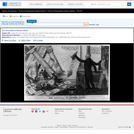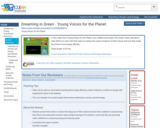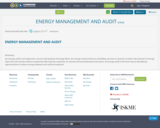UNIT I BASIC CONCEPTS AND FIRST LAW Basic concepts - concept of continuum, comparison of microscopic and macroscopic approach. Path and point functions. Intensive and extensive, total and specific quantities. System and their types. Thermodynamic Equilibrium State, path and process. Quasi-static, reversible and irreversible processes. Heat and work transfer, definition and comparison, sign convention. Displacement work and other modes of work .P-V diagram. Zeroth law of thermodynamics – concept of temperature and thermal equilibrium– relationship between temperature scales –new temperature scales. First law of thermodynamics –application to closed and open systems – steady and unsteady flow processes.UNIT II SECOND LAW AND AVAILABILITY ANALYSIS Heat Reservoir, source and sink. Heat Engine, Refrigerator, Heat pump. Statements of second law and its corollaries. Carnot cycle Reversed Carnot cycle, Performance. Clausius inequality. Concept of entropy, T-s diagram, Tds Equations, entropy change for - pure substance, ideal gases – different processes, principle of increase in entropy. Applications of II Law. High and low grade energy. Available and non-available energy of a source and finite body. Energy and irreversibility. Expressions for the energy of a closed system and open systems. Energy balance and entropy generation. Irreversibility. I and II law Efficiency.UNIT III PROPERTIES OF PURE SUBSTANCE AND STEAM POWER CYCLE Formation of steam and its thermodynamic properties, p-v, p-T, T-v, T-s, h-s diagrams. p-v-T surface. Use of Steam Table and Mollier Chart. Determination of dryness fraction. Application of I and II law for pure substances. Ideal and actual Rankine cycles, Cycle Improvement Methods - Reheat and Regenerative cycles, Economiser, preheater, Binary and Combined cycles.UNIT IV IDEAL AND REAL GASES, THERMODYNAMIC RELATIONS Properties of Ideal gas- Ideal and real gas comparison- Equations of state for ideal and real gases- Reduced properties-.Compressibility factor-.Principle of Corresponding states. –Generalised Compressibility Chart and its use-. Maxwell relations, Tds Equations, Difference and ratio of heat capacities, Energy equation, Joule-Thomson Coefficient, Clausius Clapeyron equation, Phase Change Processes. Simple Calculations.UNIT V GAS MIXTURES AND PSYCHROMETRY Mole and Mass fraction, Dalton’s and Amagat’s Law. Properties of gas mixture – Molar mass, gas constant, density, change in internal energy, enthalpy, entropy and Gibbs function. Psychrometric properties, Psychrometric charts. Property calculations of air vapour mixtures by using chart and expressions. Psychrometric process – adiabatic saturation, sensible heating and cooling,humidification, dehumidification, evaporative cooling and adiabatic mixing. Simple Applications










